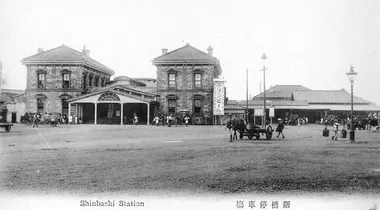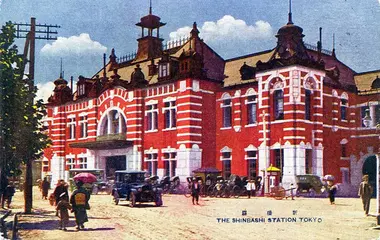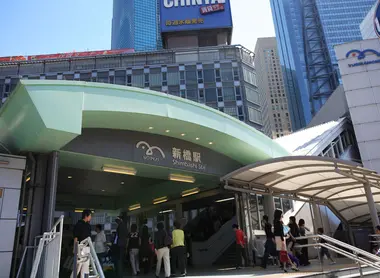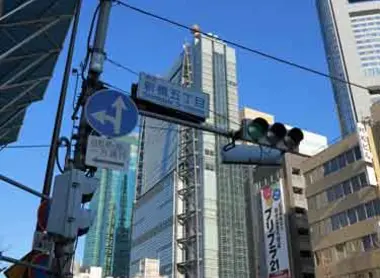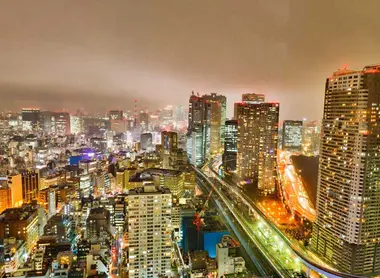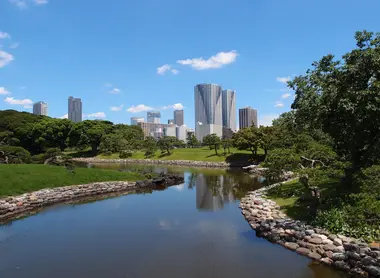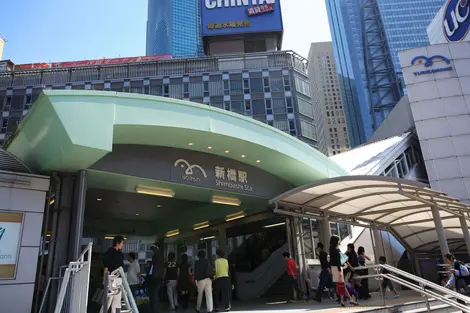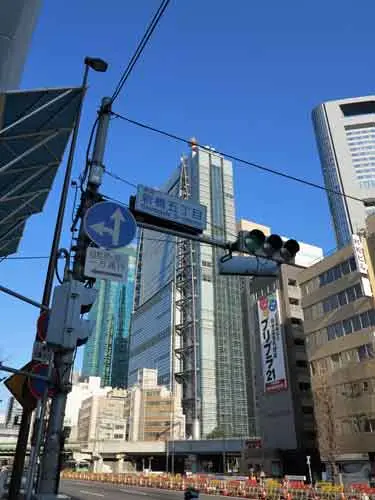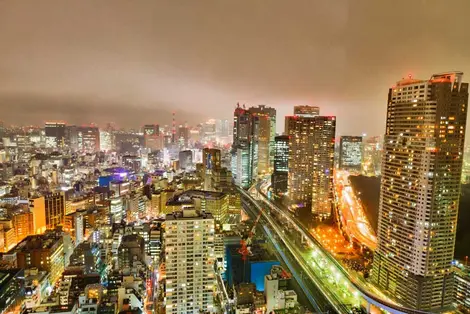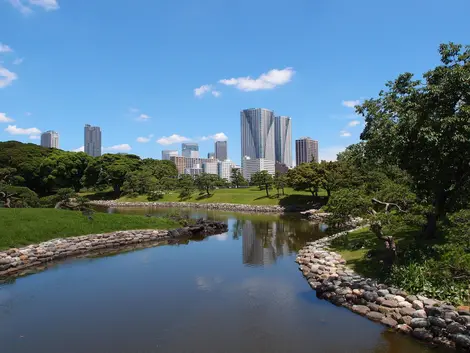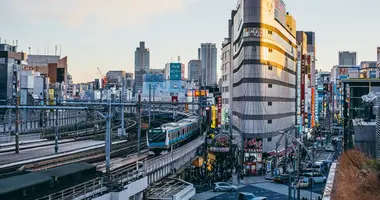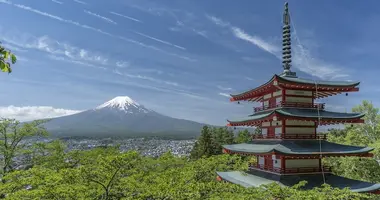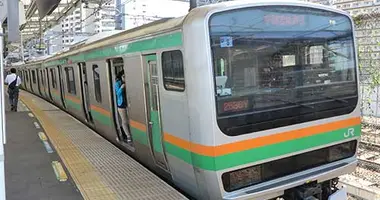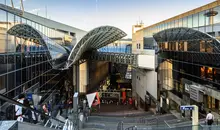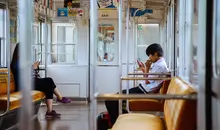Shimbashi Station Tokyo 新橋駅
- Published on : 12/01/2014
- by : Japan Experience
- Youtube
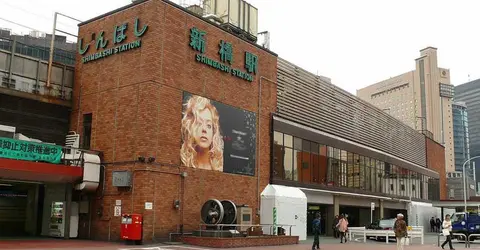
Shimbashi Station East Exit, Tokyo (present day)
@Japan Visitor
Shimbashi Station: read a guide to Shimbashi Station in Tokyo an historic station close to Shiodome and Hamamatsucho.
In the district of Minato, the station of Shimbashi, inaugurated in 1872 is one of the oldest stations in the country. It is the brilliant symbol of the history of the railways in the Japanese capital. However, Shimbashi is not just about its rich past. At the interconnection of several lines, Shimbashi station is also the rallying point for neighborhood salarymen who come to relax after dark in the many gado shita; those little bars and restaurants tucked away under the train tracks. A bustling atmosphere full of authenticity to discover after sundown!
History of Shimbashi Station
In 1872, the first railway line, linking the Japanese capital to Yokohama, was put into service. This link, called the Tokaidô line, transports passengers from the port city to Tokyo in 35 min. Its terminus in the capital was then a brand new station; that of Shimbashi Teishajo.
Designed by an American architect, the latter was inaugurated in October 1872 in the presence of Emperor Meiji (1852-1912); the latter even took part in the maiden voyage.
In 1909, Karasumori station, connected to the Yamanote line, opened its doors near that Shimbashi Teishajo.
In 1914, the extension of the Tokaidô line to the brand new station in Tokyo completely changed the network of surrounding stations. Shimbashi Station was converted into freight station and renamed Shiodome Station.
Karasumori Station was then renamed Shimbashi Station. Unfortunately, the Kanto earthquake of September 1, 1923, destroyed Shimbashi station. A new station was quickly erected, albeit more modest than it was before.
Shimbashi Station Connections
Shimbashi Station is a major rail intersection in Tokyo connecting with the circular JR Yamanote Line (2 stops from Tokyo Station), the Tokaido Line for trains to Fujisawa, Hiratsuka, Odawara and Atami, the Yokosuka Line for Yokohama and down to Kamakura and Yokosuka, and the Keihin-Tohoku Line for trains to Shinagawa, Yokohama Station, and Ofuna.
Shimbashi Station also has two Tokyo subway lines: the Toei Asakusa Line, and the Ginza Line for access to Asakusa in the east or Shibuya in the west.
Shiodome Station on the Toei Oedo Subway Line is about a 9 minute walk from Shimbashi Station.
Just outside JR Shimbashi Station, on the east side, is the terminus for the Yurikamome Line that goes across Rainbow Bridge to Toyosu Station in Koto-ku via Odaiba.
The East Exit of Shimbashi Station leads to Shiodome with its gleaming skyscrapers, chic cafes, ritzy restaurants and modern museums.
The west, or Karasumori, exit is an altogether different experience with neighborhood bars and izakaya crowded under the railway arches.
The underground passageways of Shimbashi Station are also a warren of small cafes, restaurants and bars - some of them old-style tachinomiya or stand-up bars. Something of the traditional, boisterous atmosphere of old Tokyo remains here.
Dai-Ichi Hotel Tokyo north of the station, and the Hotel Villa Fontaine Shiodome.
Gourmets ought to not miss the Tabisuru Market which offers a wide choice of regional products from all over the archipelago and the Sake and Shochu Information Center to discover and taste traditional Japanese spirits.
For cultural outings, several interesting places are accessible in a few minutes: the Dentsu Shiki Theater, the advertising museum, the Panasonic Shiodome Museum, not to mention the fabulous Hama-Rikyû garden.
Hotels in Shiodome close to Shimbashi Station include the Park Hotel, the Conrad Tokyo, the Mitsui Garden Hotel Shiodome Italia-gai, the
